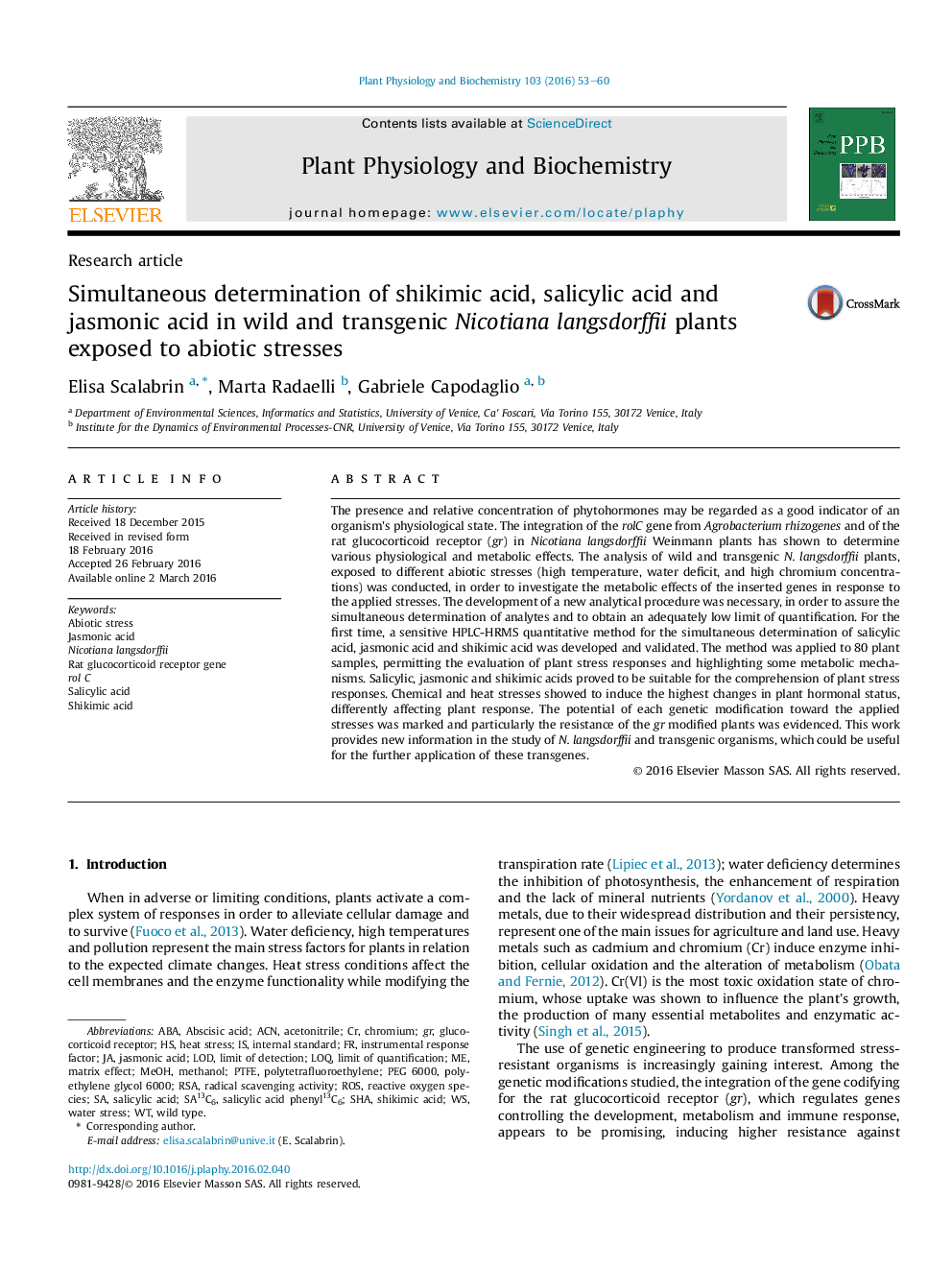| Article ID | Journal | Published Year | Pages | File Type |
|---|---|---|---|---|
| 2015601 | Plant Physiology and Biochemistry | 2016 | 8 Pages |
•Salicylic, jasmonic and shikimic acids were simultaneously determined.•Heat stress exposition enhanced endogenous jasmonic acid levels.•gr-modified N. Langsdorffii plants were less affected by chemical and heat stresses.•rolC insertion determines the reduction of heat stress-induced oxidative stress.
The presence and relative concentration of phytohormones may be regarded as a good indicator of an organism's physiological state. The integration of the rolC gene from Agrobacterium rhizogenes and of the rat glucocorticoid receptor (gr) in Nicotiana langsdorffii Weinmann plants has shown to determine various physiological and metabolic effects. The analysis of wild and transgenic N. langsdorffii plants, exposed to different abiotic stresses (high temperature, water deficit, and high chromium concentrations) was conducted, in order to investigate the metabolic effects of the inserted genes in response to the applied stresses. The development of a new analytical procedure was necessary, in order to assure the simultaneous determination of analytes and to obtain an adequately low limit of quantification. For the first time, a sensitive HPLC-HRMS quantitative method for the simultaneous determination of salicylic acid, jasmonic acid and shikimic acid was developed and validated. The method was applied to 80 plant samples, permitting the evaluation of plant stress responses and highlighting some metabolic mechanisms. Salicylic, jasmonic and shikimic acids proved to be suitable for the comprehension of plant stress responses. Chemical and heat stresses showed to induce the highest changes in plant hormonal status, differently affecting plant response. The potential of each genetic modification toward the applied stresses was marked and particularly the resistance of the gr modified plants was evidenced. This work provides new information in the study of N. langsdorffii and transgenic organisms, which could be useful for the further application of these transgenes.
Graphical abstractFigure optionsDownload full-size imageDownload as PowerPoint slide
